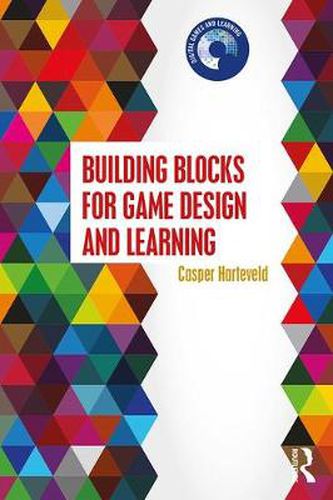Readings Newsletter
Become a Readings Member to make your shopping experience even easier.
Sign in or sign up for free!
You’re not far away from qualifying for FREE standard shipping within Australia
You’ve qualified for FREE standard shipping within Australia
The cart is loading…






As scholars increasingly recognize the utility of digital games as tools for learning, there is a growing need for knowledge in two related areas: first, how do players learn from games and second, what specific design techniques ensure meaningful learning outcomes for the player?
In Building Blocks for Game Design and Learning, Casper Harteveld relates existing learning theories to best practices in game design, exploring how each of the three views of knowing-behaviorist, cognitivist, and situative-illuminate the process of learning through gaming. To these established theories he adds a fourth, design-based perspective that builds upon Christopher Alexander’s theory of pattern languages, wherein learning takes place through specific game mechanisms or gamelets. By describing these building blocks that facilitate learning, Harteveld identifies a number of practical techniques for game designers but also elucidates implications for curriculum development more generally, making this book relevant for game designers, educators, and scholars alike.
$9.00 standard shipping within Australia
FREE standard shipping within Australia for orders over $100.00
Express & International shipping calculated at checkout
Stock availability can be subject to change without notice. We recommend calling the shop or contacting our online team to check availability of low stock items. Please see our Shopping Online page for more details.
As scholars increasingly recognize the utility of digital games as tools for learning, there is a growing need for knowledge in two related areas: first, how do players learn from games and second, what specific design techniques ensure meaningful learning outcomes for the player?
In Building Blocks for Game Design and Learning, Casper Harteveld relates existing learning theories to best practices in game design, exploring how each of the three views of knowing-behaviorist, cognitivist, and situative-illuminate the process of learning through gaming. To these established theories he adds a fourth, design-based perspective that builds upon Christopher Alexander’s theory of pattern languages, wherein learning takes place through specific game mechanisms or gamelets. By describing these building blocks that facilitate learning, Harteveld identifies a number of practical techniques for game designers but also elucidates implications for curriculum development more generally, making this book relevant for game designers, educators, and scholars alike.